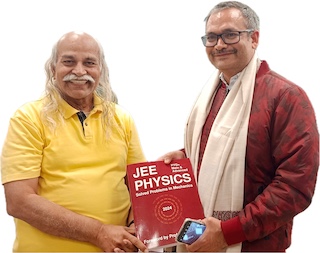Kinetic Theory of Gases
The kinetic theory of gases is a model that explains the behavior of gases based on the motion of the gas molecules. According to this theory, a gas is composed of a large number of small particles, typically molecules or atoms, that are in constant random motion. The key assumptions of the kinetic theory of gases are:
- The gas molecules are constantly colliding with each other and with the walls of the container. The collisions are perfectly elastic. These collisions result in a net force on the walls, which is responsible for the pressure of the gas.
- The size of the gas molecules is negligible compared to the distance between them. There is no intermolecular forces between the gas molecules.
From these assumptions, we can derive several important properties of gases, such as the relationship between pressure, volume, and temperature described by the ideal gas law, as well as the root-mean-square speed of gas molecules, which is related to the temperature of the gas.
Let $m$ be mass of a gas molecule. The molar mass ($M$) of a gas is mass of the Avogadro number ($N_A=6.023\times{10}^{23}$) of gas molecules \begin{align} M=mN_A. \end{align}
The Boltzmann's constant is the ratio of gas constant $R$ and Avogadro number i.e., \begin{align} k=\frac{R}{N_A} \end{align}
The root mean square (rms) speed of the gas molecules is given by \begin{align} v_{rms}=\sqrt{\frac{3kT}{m}}=\sqrt{\frac{3RT}{M}} \end{align}
The average speed of the gas molecules is given by \begin{align} \bar{v}=\sqrt{\frac{8kT}{\pi m}}=\sqrt{\frac{8RT}{\pi M}} \end{align}
The most probable speed of the gas molecules is given by \begin{align} v_p=\sqrt{\frac{2kT}{m}} \end{align}
The pressure of a gas is given by \begin{align} p=\tfrac{1}{3}\rho {v_{rms}^2} \end{align}
The equipartition of energy gives kinetic energy $K=\frac{1}{2}kT$ for each degree of freedom. Thus, \begin{align} K=\frac{f}{2}kT \end{align} for molecule having $f$ degrees of freedoms.
The internal energy of $n$ moles of an ideal gas is given by \begin{align} U=\frac{f}{2}nRT. \end{align}
Solved Problems
Problem (JEE Mains 2022): According to kinetic theory of gases
- The motion of the gas molecules freezes at 0 deg C.
- The mean free path of gas molecules decreases if the density of molecules is increased.
- The mean free path of gas molecules increases if temperature is increased keeping pressure constant.
- Average kinetic energy per molecule per degree of freedom is $\frac{3}{2}k_B T$ (for monoatomic gas).
Problem (COP-Vol2-Ch24-Pr32): A container of volume 50 cc contains air (mean molecular weight = 28.8 g) and open to atmosphere where the pressure is 100 kPa. The container is kept in a bath containing melting ice ($0^{o}\mathrm{C}$). (a) Find the mass of the air in the container when thermal equilibrium is reached. (b) The container is now placed in another bath containing boiling water ($100^{o}\mathrm{C}$). Find the mass of air in the container. (c) The container is now closed and placed in the melting-ice bath. Find the pressure of the air when thermal equilibrium is reached.
Solution: The volume of the container is $V=50\times10^{-6}\,\mathrm{m^3}$, the atmospheric pressure pressure is $p=10^5\;\mathrm{Pa}$, and molecular weight of air is $M=28.8\;\mathrm{g}$. In case (a), temperature is $T=273\;\mathrm{K}$ and in case (b) temperature is $T=373\;\mathrm{K}$. Apply the ideal gas equation, $pV=nRT=\frac{m}{M}RT$ to get $m=0.0635\;\mathrm{g}$ in case (a) and $m=0.0464\;\mathrm{g}$ in case (b). In case (c), mass is $m=0.0464\;\mathrm{g}$ and temperature is $T=273\;\mathrm{K}$. Apply the ideal gas equation to get $p=\frac{mRT}{MV}=73\;\mathrm{kPa}$.
